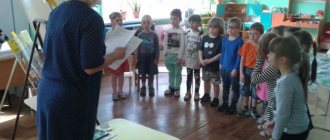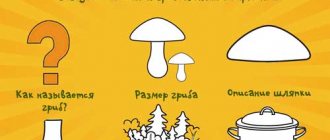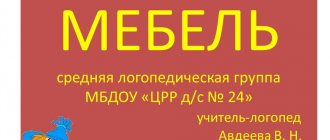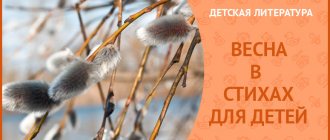Age group: preparatory. Leading educational area: “Cognition” Integration of educational areas:
- “Reading fiction” - the formation of interests and needs in reading (perception) of books;
- “Artistic creativity” - introduction to the fine arts;
- “Communication” - development of free communication with adults, development of all components of children’s oral speech;
- “Socialization” - the development of gaming activities, the formation of gender, family, and citizenship;
- “Physical education” - developing children’s need for physical activity;
- “Music” - development of children’s musicality.
Objectives: Educational: clarify and enrich children’s knowledge about Russian folk tales. Learn to recognize a fairy tale by assignment. To form a stock of literary and artistic impressions, a personal position both when perceiving fairy tales and in the creative process. Educational: to cultivate interest in reading and oral folk art. Cultivate such qualities as mutual assistance. Honesty and fairness in the game. Developmental: develop individual literary preferences, develop the ability to act in concert, develop speech, imagination, fantasy, thinking. Develop intonation expressiveness of speech, enrich children's vocabulary. Equipment: map, puzzles, magic chest, set of books of Russian folk tales, audio recording with fairy tales, magic ball. Preliminary work:
- Reading and listening to audio recordings of Russian folk tales with conversations on the content;
- Children's stories about their favorite books;
- Design of a thematic book exhibition;
- Design of an exhibition of children's drawings of characters from their favorite books;
- Collaborative and independent games with table theaters.
Vocabulary work: magical, wonderful, instructive, witty. Mysterious, unusual, wise. Progress of GCD Teacher (in the image of Vasilisa the Wise), children enter the group to the music and freely stand around the teacher. Educator: Today we will go along unknown paths into a wonderful world. We will go through the fairytale forest to visit the bear, and I, Vasilisa the Wise, will help you on your journey. My magic chest has everything to find the way through the fairytale forest, but there are only a lot of paths there. Tell us what travelers need. To avoid getting lost? (children's answers: compass, map, etc.) Educator: That's right, it's a map. So we have a map on which you see 2 tracks. (The children, together with Vasilisa the Wise, approach the map and examine it.) You and I will split into two teams, one will go along the blue track, the other along the yellow one. Having answered all the questions, we will find out whose path will lead to the bear's house faster. Having received and completed the tasks correctly, the team gets a turn; if members of other teams know the correct answer, then in turn order they can answer and get an additional turn. (Children are divided into teams and seated at tables marked with the appropriate color) Educator: Guys, now we will check how well you remember Russian folk tales. Why do you think these fairy tales are called Russian folk tales? (children's answers: because they were composed by the Russian people) Do you like fairy tales? Why do you like them? (children's answers) Indeed, they are all different, amazing events and transformations take place in them. Our road to the bear's house will be difficult. Are you ready to encounter miracles and mysteries, answer all the questions of the fairytale forest, overcome all obstacles? Children: yes! Educator: Then let's go! Just tell me first what magical objects or creatures help fairy-tale heroes travel. (children's answers: walking boots, a broom, a mortar, a stove, a hut on chicken legs, a magic ball...) Educator: I have a magic ball, it will help us find the right path and bring us to the right place.
(Teacher, looking into the magic chest) First task: “Collect and name a fairy tale.” You need to assemble a fairy tale from puzzles and name it correctly. Second task: “Confusion.” Both teams need to remember and give the correct names of fairy tales.
- “Sister Alyonushka and brother Nikitushka”;
- "Ivan Tsarevich and the Green Wolf";
- "At the dog's command";
- "The Wolf and the Seven Tiger Cubs";
- "Pashenka and the Bear";
- "Geese-crows."
Third task: “Guess the name of the fairy tale.” You will listen to excerpts from Russian folk tales and will have to determine its name. (The teacher conducts a fabulous physical education session). All around us, here and there, different fairy tales live: We are a nice family of little goats, We love to jump and gallop (they jump on the spot) We love to run and play, We love to butt with horns (with the index fingers of both hands we show “horns” to each other). Here we planted it (bend down) And watered it with water (imitation of movement) And now we will pull it (imitation of movement) And we will cook porridge from the turnip (imitation of movement) And we will be healthy and strong from the turnip (show “strength”).
(Teacher, pointing to the map): There are riddles in the clearings. Guess them without a hint, Call them, be bold, These fairy-tale friends!
Fourth task: “Guess the riddle.” 1. The pretty maiden is sad, She doesn’t like spring. It’s hard for her in the sun, the poor thing sheds tears. (Snow Maiden). 2. An arrow flew and fell into a swamp, And in this swamp, someone caught it, Who, having said goodbye to his green skin, became sweet, beautiful, and pretty? (The Frog Princess) 3. In heaven and on earth, a woman rides on a broom, Scary, evil, who is she? (Baba Yaga) 4. It was mixed with sour cream, baked in a Russian oven, met animals in the forest and quickly left them. (Kolobok). Fifth task: “Book Fair” Each team is offered a set of books, all of them except one with Russian folk tales. You need to find the extra book and explain your choice. Sixth task: “Change the fairy tale.” Guys, who comes up with fairy tales? (children's answers: people, storyteller) In the sixth and final task, you yourself must act as storytellers and storytellers.
- "Khavroshechka"
- "Sister fox and gray wolf."
Well done guys, we were very interested in listening to your fabulous stories. Ancient fairy tales: Sad, funny, Kind, serious, Moon and star. All of us, not only children, but also adults, love to read, listen, retell, and watch them. Russian folk tales are very instructive, witty, interesting, and teach us wisdom and kindness. Today we remembered our favorite fairy-tale characters. Both teams, having overcome difficulties, reached the finish line, to the bear's house, friendship won! (a pre-prepared child in a bear costume comes out) Bear: Hello! Guys, guess my riddle: But the road is long, And the basket is not easy. I wish I could sit on a tree stump and eat a pie! I am so glad that you came to visit me! You were brave and friendly, you overcame all difficulties, you found the way. For this I have prepared a treat for you! Educator: It’s time for us to leave the fairytale forest and return to the group. Magic ball, show the way home!
Let's play a fairy tale
This work participates in the regional publication competition “Kindergarten: day by day.” The author's spelling and punctuation have been preserved!
“There are invisible strings in the soul of every child.
If you touch them with a skillful hand, they will sound beautiful.”
V.A. Sukhomlinsky
A fairy tale for a child is a small life full of bright colors, miracles and adventures. It enters the life of every child from a very early age, accompanies him throughout preschool childhood and remains with him for life. The fairy tale lives in every home and enjoys great love. It is the fairy tale that plays an important role in the development of a child’s imagination and instills a love for books.
When my kids happily transform into bunnies and bears; They easily cope with the role of dogs, kittens, kids and other familiar animals, I see their sincere joy and happiness. And all thanks to the animated dolls, who learned to talk, dance and sing. But kids cannot develop and play out the plot on their own. They only imitate animals, copying their external signs, without revealing their behavioral characteristics.
Therefore, I taught the children of my group “Sunflowers” of the Municipal Educational Institution “Kindergarten No. 9” in the city of Yalutorovsk some methods of play actions during the implementation of the “Playing a Fairy Tale” project. Even though our children are small, they enjoy listening to fairy tales, love to dress up, and enthusiastically participate in dramatization games based on their favorite fairy tales.
“Guys, now we are in the forest and we are all bears - looking for honey!” or “We are cunning little foxes” - at that very moment the group was filled with animated fairy tale characters. I empathized with the children, repeated the movements and voices of the fairy tale characters, and the children, in turn, imitating me, reinforced sounds, memorized certain words, and learned to answer questions. And the costumes, hats, masks, and attributes for the fairy tale made the game more emotional and sincere. For example, when dramatizing the song “Airplane,” children imitated the flight of an airplane. Spreading their arms to the sides and swaying them like the wings of an airplane, they sang along with me: “Oooh, I’m flying to Moscow.” Or, playing the game “The Bunnies Came Out to the Meadow,” the children imitated the movements of the bunnies: the bunnies jump, the bunnies dig a root with their paw. Their speech became noticeably more active, the children began to actively engage in verbal interaction not only with me, but also with their peers. The children's games began to be filled with communication with each other and with toys.
In order to interest parents in theatrical activities and make them want to keep their children interested, I held a parent meeting on the topic “Fairy tale as a game for girls and boys” and a master class “With love from mom” on making a homemade doll. At a parent meeting, I suggested that parents turn into actors and tell the Russian folk tale “Kolobok.” Young mothers and fathers joined the game with pleasure, because they too had recently been children. The main conclusion that parents made is that the gaming experience of childhood remains with us for life. You need to play with children! We must learn to play together with our children!
Many parents became interested in the work on theatrical activities in our group and provided their assistance in the selection of attributes, costumes and the production of various types of theaters. I created a creative group of parents: the theater’s costume department was replenished, the scenery and stage were updated, and the theater corner in the group was supplemented with some types of theaters.
Help was provided to children in learning and consolidating textual developments - roles, chants, nursery rhymes at home. Parents took an active part in skits, theatrical games, and holidays. The group turned into a fairy-tale house - a mansion, where different heroes of fairy tales live together, where each fairy tale prepared surprises and tasks.
The main product of the project was the dramatization of the fairy tale “Teremok”. Teremok is a fairy tale in which a variety of animals find themselves all together in one house. They are kind and sympathetic, and have never denied anyone a roof over their head. And - lo and behold! The little mansion suddenly turned out to be very roomy! With the help of masks, children turned into real actors. They demonstrated not only their knowledge of the fairy tale, but also coherent speech, their artistic abilities, they played, danced, and imitated the heroes of the fairy tale.
The main achievement of the work on the project was the creation of a favorable, friendly atmosphere in the children's team, filling children with vivid impressions and strengthening contact between the teacher, students and their parents. Children learned to interact with each other, play together, and not quarrel.
The fairy tale “Teremok has been played, but how many more good fairy tales do our people have! They are a storehouse of wisdom and kindness, the best means of raising and developing my kids.
Why do we need fairy tales?
What does a person look for in them? Maybe kindness and affection? Could it be yesterday's snow? In a fairy tale, joy wins, A fairy tale teaches us to love, In a fairy tale, animals come to life, They begin to speak. And a miracle comes to visit and does not pass by. The main thing is to believe in it, and it is already with you.
Author: Svetlana Vladimirovna Moshkova, teacher
MAUDO "Kindergarten No. 9", Yalutorovsk.
“Certificate of publication in the media” Series A No. 0008349.
From the editors of the online publication “Kindergartens of the Tyumen Region” All authors of reports in the “Preschool News” section, which are published under an editorial agreement with a preschool educational institution, can order a “Certificate of publication in the media” at any time. Sample: Certificate of publication in the media.pdf
Go to order form >>>
Dear Colleagues! Tell us about interesting events in your kindergartens. How to become an author >>>
Your material will participate in the regional competition “Kindergarten: Day by Day” for the best coverage of the activities of a preschool educational organization in the Internet space in the 2022/2023 academic year. Awarding on the Day of teachers and preschool education workers at the regional holiday Pedagogical Forum in the Department of Education and Science.
Share









